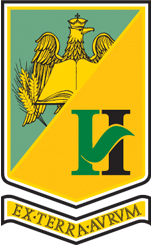Published in Scientific Papers. Series B, Horticulture, Vol. LXVIII, Issue 2
Written by Mariana CALARA, Neculai MUNTEANU, Dan Ioan AVASILOAIEI, Creola BREZEANU, Petre Marian BREZEANU, Claudia BĂLĂIŢĂ, Mihai HLIHOR
The aim of the research was to assess the allelopathic potential of certain species for weed control in climbing bean crop. Field trials were carried out to examine the allelopathic impacts of the following allelopathic species: white clover (Trifolium repens), red clover (Trifolium pratense), sainfoin (Onobrychis viciifolia), oil radish (Raphanus sativus var. oleiformis), yellow mustard (Sinapis alba), oats (Avena sativa), barley (Hordeum vulgare), two-rowed barley (Hordeum distichon) and Japanese grass (Lolium perene, Festuca rubra and Poa pratensis). These species were sown with “Auria Bacăului” climbing bean (Phaseolus vulgaris) on intercropping system. It has been observed that main weed species identified in climbing bean crop were: red-root amaranth (Amaranthus retroflexus), cockspur (Echinochloa crus-galli), Canada thistle (Cirsium arvense), perennial sow thistle (Sonchus arvensis), pale knotweed (Persicaria lapathifolia), groundsel (Senecio vulgaris), bindweed (Convolvulus arvensis), guasca (Galinsoga parviflora), flower-of-an-hour (Hibiscus trionum) and petty spurge (Euphorbia peplus). In conclusion, intercropping beans with allelopathic species such as red clover, yellow mustard, and oil radish, along w
[Read full article] [Citation]




